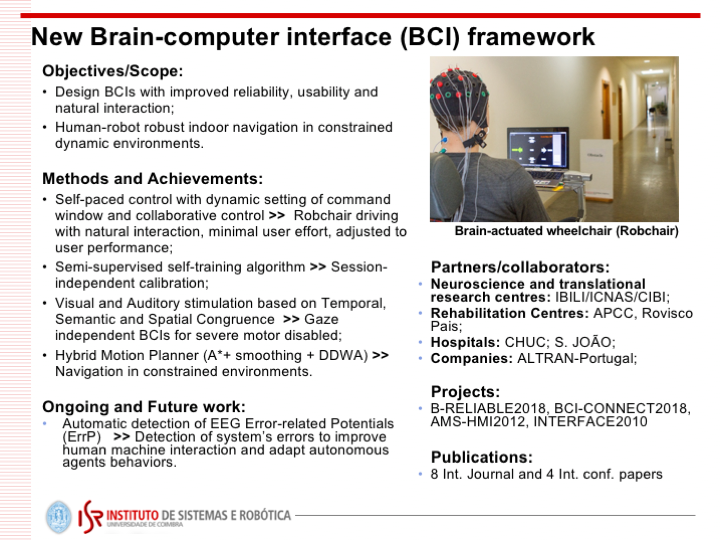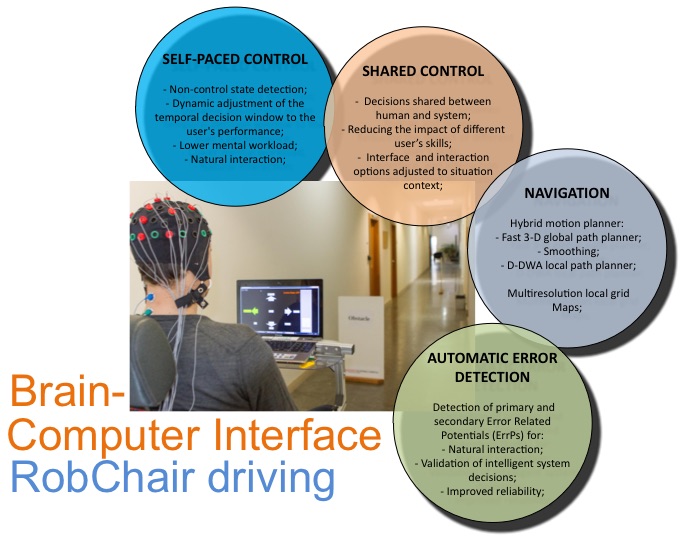Brain-computer interfaces (BCI) (or brain-machine interfaces (BMI)) offer a direct communication channel between the brain and external devices, such as a computer or a robotic system. BCI is a promising research technology that has been mainly dedicated to restore communication, mobility and motor movement of people with severe motor disabilities. However, BCI research is rapidly widening its scope, including new medical and non-medical applications, such as neurorehabilitation (motor and neurodevelopment), augmented performance, education (learning), safety (driving assistance), and gaming.
Despite its enormous potential, BCI is still limited by low information throughput, reduced control dimensionality, low reliability, and high user’s mental workload, leading to low general usability of the BCIs. Therefore, BCI’s current properties still do not match the desired features that most applications require.
In the past few years ISR-UC has been striving to improve the reliability and usability of BCIs, proposing new methods and approaches. A new P300-based BCI framework was developed combining A) self-paced control (automatic detection of non-control states); B) dynamic setting of the time window duration for decoding EEG commands, automatically adjusting to user’s performance; and C) human-machine shared-controller integrating a hybrid-motion controller for a mobile robot navigation. The combination of these three components allowed people with severe motor impairments to steer an intelligent wheelchair (RobChair) in a complex office environment, in a very natural and reliable way with minimal effort. Work has been mainly developed in the context of two R&D projects, INTERFACE10: Emergent Interfaces for Improving Accessibility of Persons with Cerebral Palsy, and AMS-HMI12: Assisted Mobility Supported by Shared-Control and Advanced Human-Machine Interfaces (https://sites.google.com/site/amshmi12/) in collaboration with the Cerebral Palsy Association of Coimbra (APCC) and Coimbra Hospital and Universitary Centre (CHUC) for validation with end-users.
Currently, we are focused on the automatic detection of error in BCIs and other human-machine interaction processes. Particular focus is being given to the research of an EEG signal called "Error Related Potential" (ErrP), which occurs naturally in the brain as a response to errors, and its application in: 1) communication and mobility assistance systems for people with motor impairment; 2) advanced driver assistance systems useful for the general population; and 3) neuro-rehabilitation systems for children with neurodevelopmental disorders. Work is being developed in the context of two recently approved R&D projects, B-RELIABLE: Boosting reliability and interaction on brain-machine interface systems integrating automatic error-detection, and BCI-CONNECT: Effective Brain connectivity and error monitoring circuits in health and disease from neurocognition to brain.

